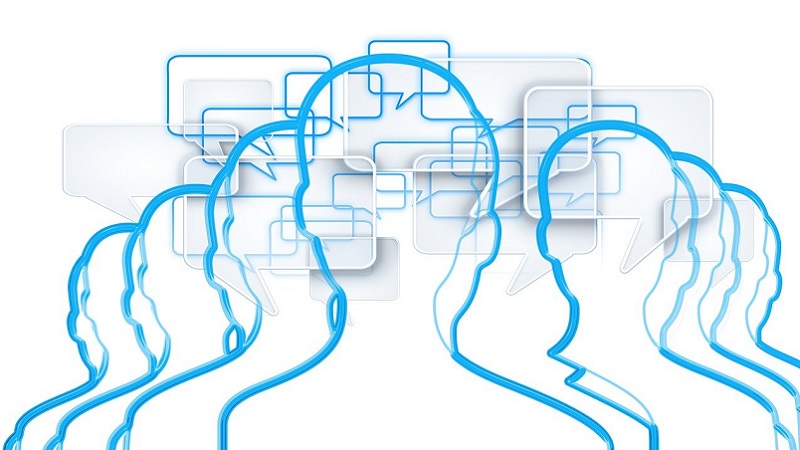Disinformation on Twitter: This problem has become more and more serious in the last months and years. Therefore the network fights against the spreading of false information with numerous measures and features. A classifying overview.
What was hardly imaginable 30 years ago is now a reality: Billions of people from all regions and countries of the world connect to each other via the Internet and, above all, social networks. They are thus creating new business models on a global scale and changing the entire value chain.
The dilemma: freedom of opinion vs. control
But for some years now, Facebook, Twitter and Co. have been caught up in their past. Especially in the first decade of their existence, social networks were primarily concerned with growth.
New users were literally welcomed with open arms and activity in the form of posts, comments or even pages was rewarded with reach and attention.
Whenever disinformation has occurred in posts or entire groups on Twitter and the like, the managers of social networks and platforms have long held back.
For years, deleting posts, pages or groups was only done after public discussions. As a rule, the argument of freedom of expression was cited as a reason why even racist or discriminatory contributions were allowed to remain on the platforms.
The filter bubble effects and the dangerous reach channels
Of course it is absolutely right that social networks respect freedom of expression. Suppressing or preventing exchange is always dangerous. Moreover, our democracy lives from public discussions. It is not without reason that freedom of opinion is anchored in the German constitution.
The problem is only that the years of guilelessness of social networks have ensured that numerous users find themselves in a filter bubble. This means that because of their interactions, they only see content that supports their opinion anyway.
For example, anyone who believes in a chip vaccination by Bill Gates, comments on corresponding posts and distributes Likes will be suggested the corresponding groups and pages by Twitter, Facebook and Co.
This in turn has led to the creation of large channels over the years, which have a gigantic reach and thus a great deal of influence on society. An excellent example of this is the QAnon grouping.
Disinformation on Twitter: The hard fight for control
At the latest since the US election campaign in 2016, which was suspected of Russian influence, the work of social networks has moved to the forefront. Both politicians and the public are vigorously pursuing whether there has been progress in the fight against fake news.
Disinformation on Twitter and the like has thus become a threat to the social networks’ business model. If Mark Zuckerberg, Jack Dorsey and Co. do not succeed in bringing their own platforms under control, they may be threatened with destruction by politics.
In detail, the platform’s measures are not particularly conspicuous. But if you take a holistic view of the issue, it becomes clear that Twitter, for example, has taken many small steps to regain control of its own platform.
1. twitter tightens up checking of bots
One measure from spring 2020 concerns bot networks. They automatically ensure that disinformation on Twitter is shared and clicked countless times within seconds.
That’s why Twitter has updated its developer guidelines. Bot accounts must be clearly marked as such when they are registered. They are also only allowed if they pursue helpful goals. This applies to earthquake or severe weather warnings, for example.
So the first step is to reduce automation on your own platform.
2. twitter extends reporting possibilities
When a tweet deliberately spreads false information, many users notice it. The problem with this is that on Twitter in particular, the reporting of posts was often associated with legal paragraphs. In case of doubt, a tweet was rather not reported.
For this reason, the platform has worked hard in recent months to make it easier to report.
In the same direction, the discussion about the introduction of a downvote- or dislike-button aims in the meantime. It should offer the possibility to clearly indicate false information by appropriate reactions.
Finally, up to now there is only the possibility to add a heart or comment on contributions. However, the comments are rather confusing and are rarely read before retweeting.
3. twitter makes retweets more difficult and shows banners
The next measures are aimed at curbing the spread of false information. Since fall 2020, anyone who wants to share disinformation on Twitter has seen several indications.
For example, Twitter asks its users whether they have actually read the shared article. In the second stage, Twitter will then optionally request a comment on the retweet, which should enable classification. However, it is possible to leave the corresponding field empty.
Twitter has also recently begun to provide tweets with false information with a corresponding note. In addition, a pop-up window appears before sharing, informing the user that the shared tweet is political misinformation.
On Donald Trump’s Twitter account this can be observed very well at the moment.
4. Twitter revises advertising guidelines
But it is not only with organic reach that accounts can engage in disinformation on Twitter. Large advertising budgets and ad campaigns can also be used to disseminate false information in a targeted manner.
In the Corona crisis, for example, this concerns advertising for overpriced or completely ineffective drugs. This is why social networks have begun to massively restrict advertising options with regard to health and politics.
Conclusion on disinformation on Twitter
A look at the measures taken by Twitter shows In the meantime, the social network is well aware of its social responsibility. This can be seen from the fact that there are many more steps to take.
For example, Twitter regularly deletes hundreds of thousands of accounts and posts, and the verification of profiles is also currently being revised. A new concept for the “blue hook” is to be introduced in 2021.
Nevertheless, it is difficult to remedy the consequences of years of inactivity in a short time. Ultimately, one of the keys to success is that growth and sales at any price can no longer be the highest good for social networks.
Those who allow racism and discrimination for profit have no social justification. This is why the fight against disinformation on Twitter is so important. It is also clear that further measures must follow in order to permanently establish the successes achieved so far.










